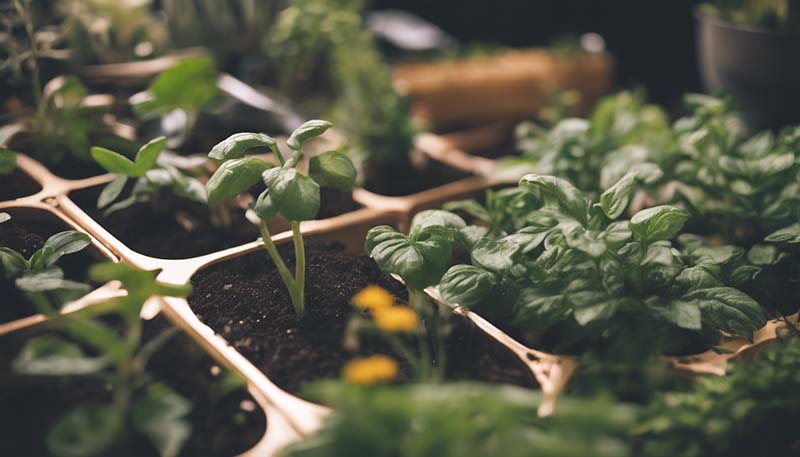Indoor Gardening: The Benefits of Companion Planting
Indoor gardening is a rewarding hobby that not only enhances the aesthetics of your living space but also provides a sense of accomplishment and the joy of nurturing life. One of the most effective practices in indoor gardening is companion planting, which involves growing certain plants together to enhance each other's growth, deter pests, and improve overall health. In this article, we'll explore the benefits of companion planting and how to implement it in your indoor garden.
The Science Behind Companion Planting
Companion planting is based on the idea that some plants have a natural symbiosis and can benefit each other when grown in close proximity. This can be due to various factors:
- Root Systems: Different root structures can access various nutrients, allowing for a more balanced soil nutrient profile.
- Pest Deterrence: Some plants release scents that repel pests that might harm their companions.
- Pollination: Certain plants attract pollinators that can also pollinate their neighbors, increasing yield.
- Shade and Light: Taller plants can provide shade for understory plants, which might require less light to thrive.
- Soil Improvement: Some plants improve soil structure, which can benefit the plants growing around them.
Benefits of Companion Planting for Indoor Gardens
Here are some of the key benefits of companion planting in indoor settings:
Advertisement
1. Improved Growth and Yield
When plants support each other's growth, they often grow better than they would alone. This can lead to a higher yield of herbs, vegetables, and fruits.
2. Natural Pest Control
Certain plants are known to repel common indoor pests like aphids, whiteflies, and spider mites, protecting your garden without the need for harsh chemicals.
3. Enhanced Flavor and Nutrient Content
Companion plants can enhance the flavor of your produce and improve the nutrient content of the soil, which in turn benefits the plants growing in it.
4. Aesthetic Appeal
Indoor gardens with companion planting often have a more diverse and visually appealing arrangement, which can be pleasing to the eye and create a more inviting atmosphere.
5. Efficient Use of Space
Indoor garden space can be limited, but companion planting allows you to grow a variety of plants in the same area without competition for resources.
6. Ecosystem Resilience
A diverse indoor garden is more resilient to disease and pests, as the different plants can support each other and recover more quickly from stress.
Companion Planting Strategies for Indoor Gardens
Here are some strategies and examples of companion planting for indoor gardens:
A. Herbs with Tomatoes
Beneficial: Basil, marjoram, oregano
Repels: Aphids, asparagus beetles
B. Marigold with Beans
Beneficial: Marigold
Repels: Aphids, bean beetles, nematodes

C. Chives with Roses
Beneficial: Chives
Repels: Aphids, spider mites
D. Mint with Squash
Beneficial: Mint
Repels: Squash bugs, cabbage loopers
E. Garlic and Onions with Peppers
Beneficial: Garlic, onions
Repels: Many soil-borne diseases and pests
How to Implement Companion Planting in Your Indoor Garden
Here are some steps to get you started with companion planting:
- Research: Learn about the plants you want to grow and which ones are known to be good companions.
- Plan: Design your indoor garden layout to place companion plants next to each other.
- Choose Containers: Opt for containers that allow for enough space and proper drainage for each plant's needs.
- Monitor: Keep an eye on the health of your plants and adjust the arrangement if necessary.
- Rotate: If possible, rotate the position of your plants to ensure even growth and access to light.
Conclusion
Companion planting is an age-old practice that can transform your indoor garden into a thriving, self-sustaining ecosystem. By strategically pairing plants, you can enhance growth, deter pests naturally, and enjoy a more abundant and beautiful indoor garden. Start experimenting with different combinations and watch your indoor garden flourish.
For more information on indoor gardening and companion planting, consider exploring resources from horticultural experts and joining online gardening communities where you can share experiences and tips.
Happy gardening!
Comment